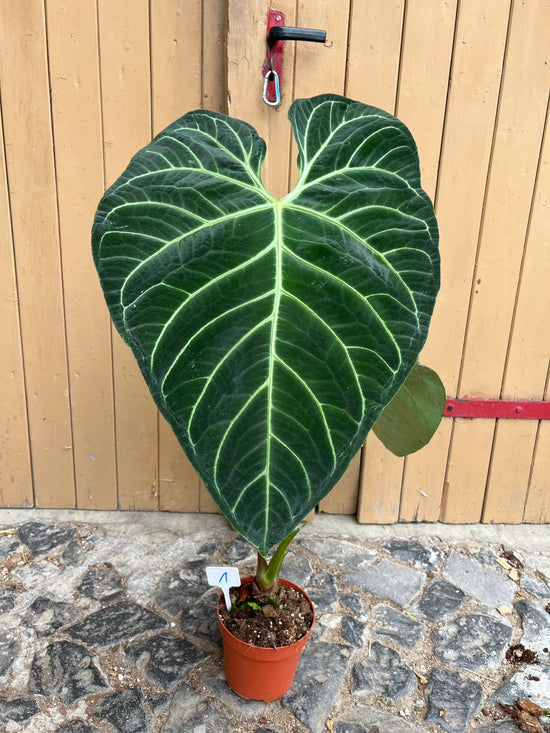74 products
-
Anthurium Michelle x Carlablackiae
 Vendor:Harmony PlantsAnthurium Michelle x Carlablackiae
Vendor:Harmony PlantsAnthurium Michelle x Carlablackiae- Regular price
-
€29,99 - Regular price
-
€39,00 - Sale price
-
€29,99
-
Anthurium Hot Chocolate x Dressleri
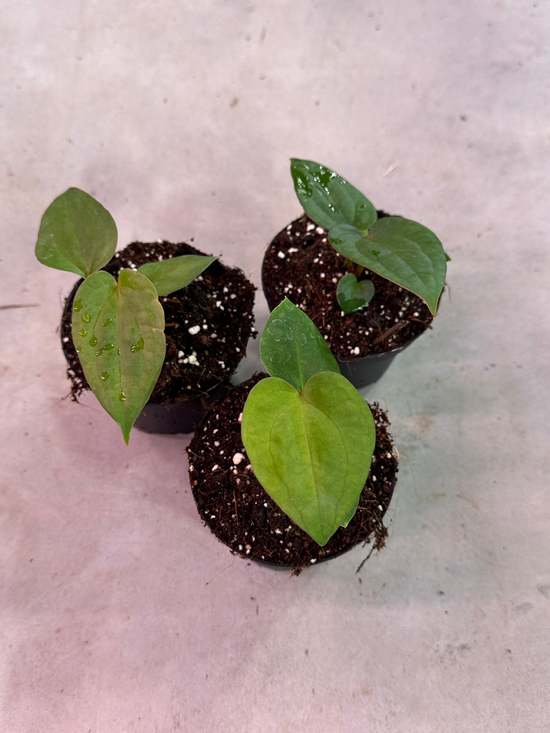 Vendor:Harmony PlantsAnthurium Hot Chocolate x Dressleri
Vendor:Harmony PlantsAnthurium Hot Chocolate x Dressleri- Regular price
-
€29,00 - Regular price
-
€49,00 - Sale price
-
€29,00
-
Anthurium Metallicum S
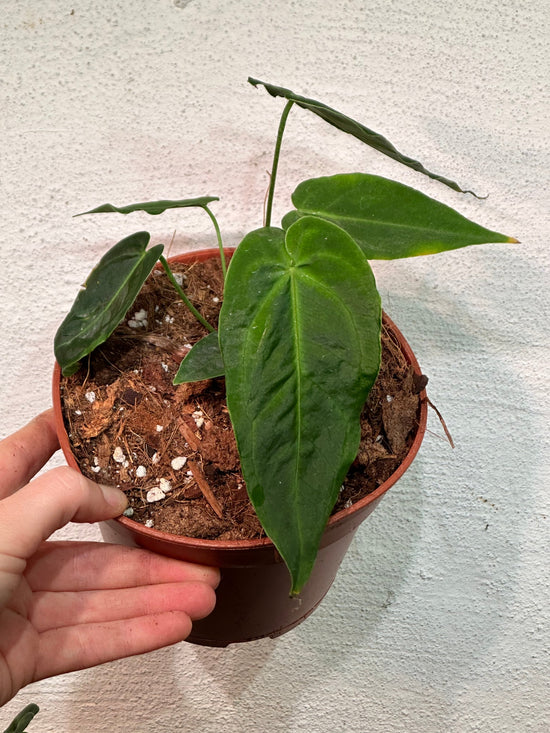 Vendor:Harmony PlantsAnthurium Metallicum S
Vendor:Harmony PlantsAnthurium Metallicum S- Regular price
-
€35,00 - Regular price
-
€45,00 - Sale price
-
€35,00
-
Anthurium Carlablackiae M
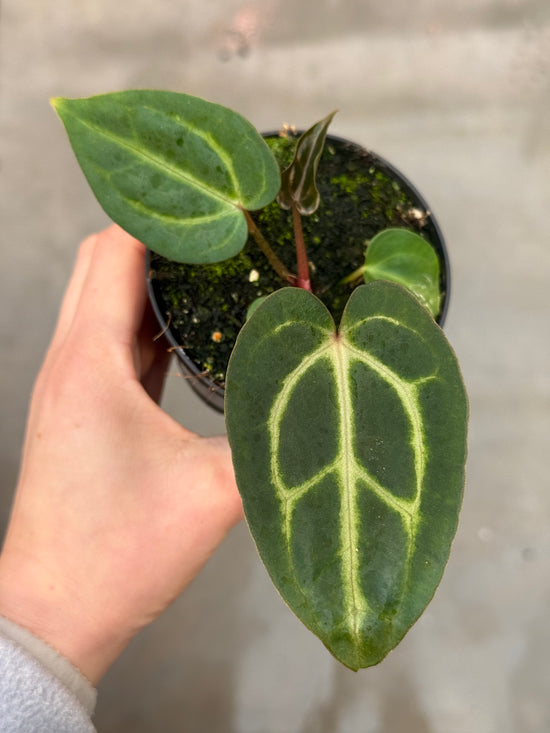 Vendor:Harmony PlantsAnthurium Carlablackiae M
Vendor:Harmony PlantsAnthurium Carlablackiae M- Regular price
-
€39,00 - Regular price
-
€89,00 - Sale price
-
€39,00
-
Anthurium Luxurians x Dressleri
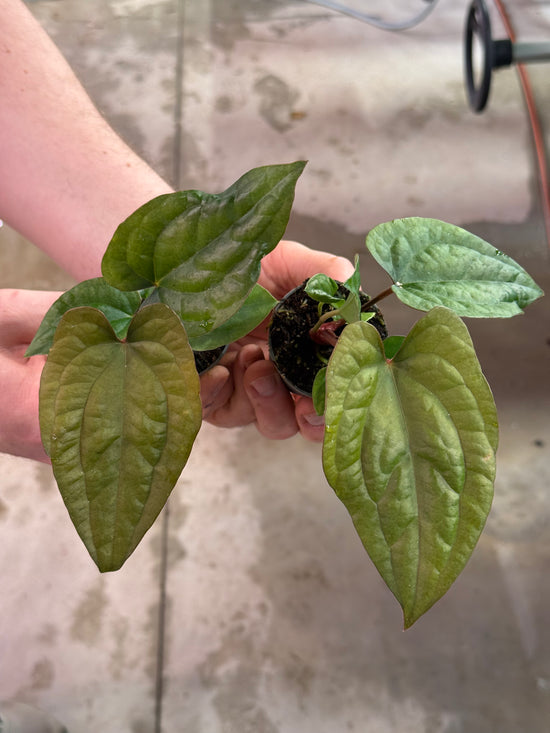 Vendor:Harmony PlantsAnthurium Luxurians x Dressleri
Vendor:Harmony PlantsAnthurium Luxurians x Dressleri- Regular price
-
€19,99 - Regular price
-
- Sale price
-
€19,99
-
Anthurium Magnificum x NOD
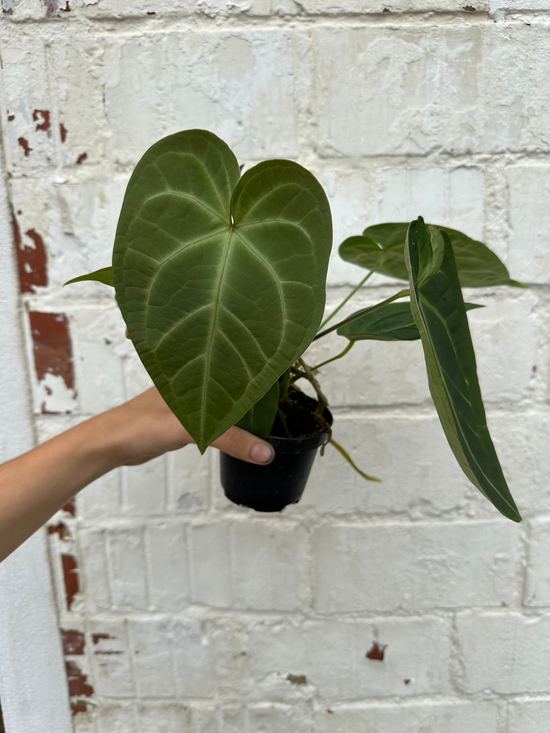 Vendor:Harmony PlantsAnthurium Magnificum x NOD
Vendor:Harmony PlantsAnthurium Magnificum x NOD- Regular price
-
€9,99 - Regular price
-
€19,99 - Sale price
-
€9,99
-
Anthurium Pallidiflorum S
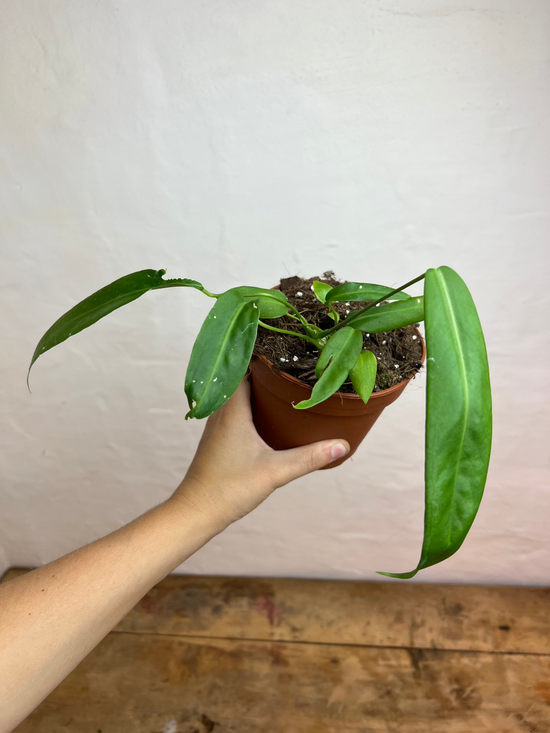 Vendor:Harmony PlantsAnthurium Pallidiflorum S
Vendor:Harmony PlantsAnthurium Pallidiflorum S- Regular price
-
€49,00 - Regular price
-
- Sale price
-
€49,00
-
Anthurium Queen Of Hearts
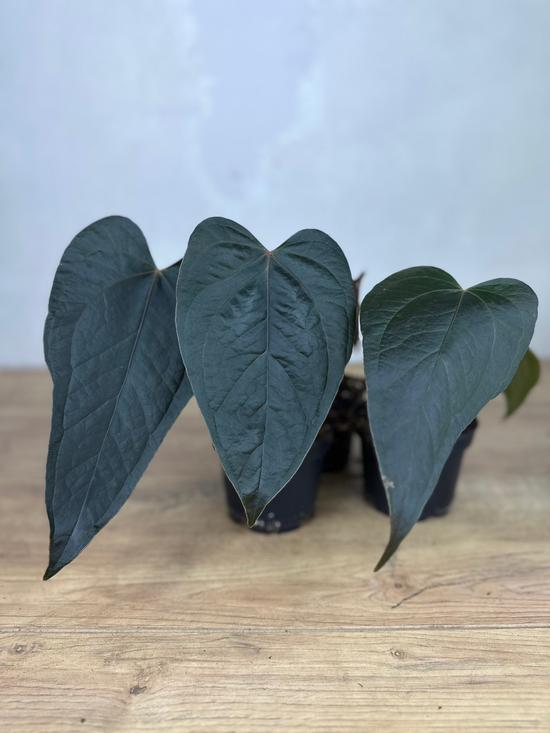 Vendor:Harmony PlantsAnthurium Queen Of Hearts
Vendor:Harmony PlantsAnthurium Queen Of Hearts- Regular price
-
€69,00 - Regular price
-
€109,00 - Sale price
-
€69,00
-
Anthurium Fort Sherman x Self
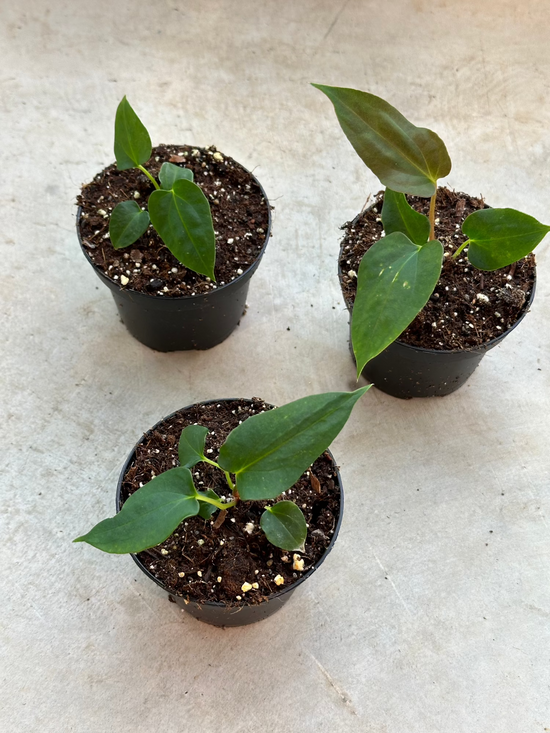 Vendor:Harmony PlantsAnthurium Fort Sherman x Self
Vendor:Harmony PlantsAnthurium Fort Sherman x Self- Regular price
-
€29,00 - Regular price
-
- Sale price
-
€29,00
-
Anthurium Papillilaminum 'Guna Yala'
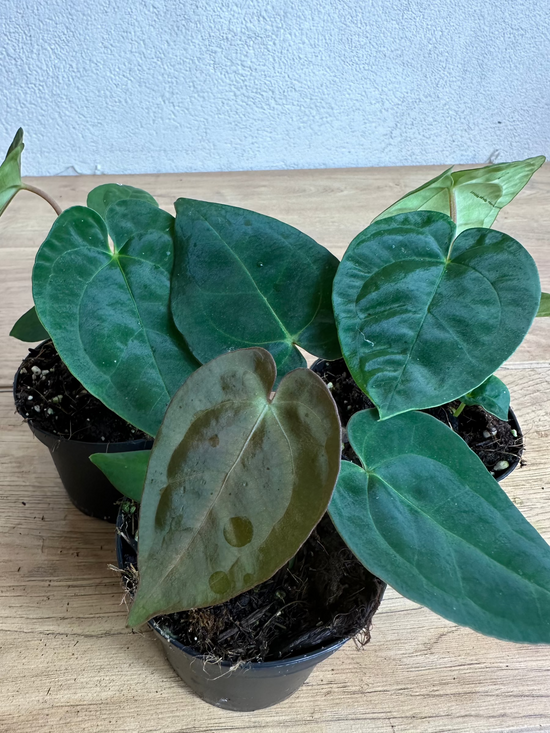 Vendor:Harmony PlantsAnthurium Papillilaminum 'Guna Yala'
Vendor:Harmony PlantsAnthurium Papillilaminum 'Guna Yala'- Regular price
-
€39,00 - Regular price
-
- Sale price
-
€39,00
-
Anthurium Michelle® (DocBlock)
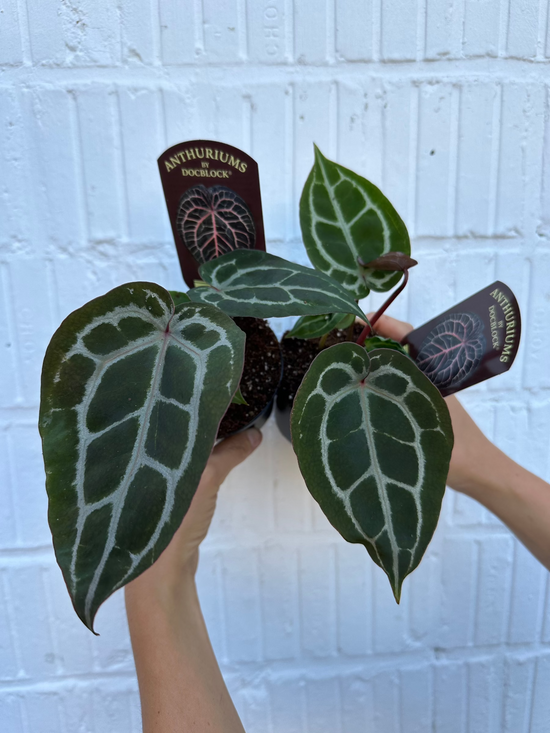 Vendor:Harmony PlantsAnthurium Michelle® (DocBlock)
Vendor:Harmony PlantsAnthurium Michelle® (DocBlock)- Regular price
-
€89,00 - Regular price
-
- Sale price
-
€89,00
-
B Ware Plants / sad plants Part 4
 Vendor:Harmony PlantsB Ware Plants / sad plants Part 4
Vendor:Harmony PlantsB Ware Plants / sad plants Part 4- Regular price
-
€10,00 €59,00 - Regular price
-
- Sale price
-
€10,00 €59,00
-
Anthurium Forgetii x Carlablackiae
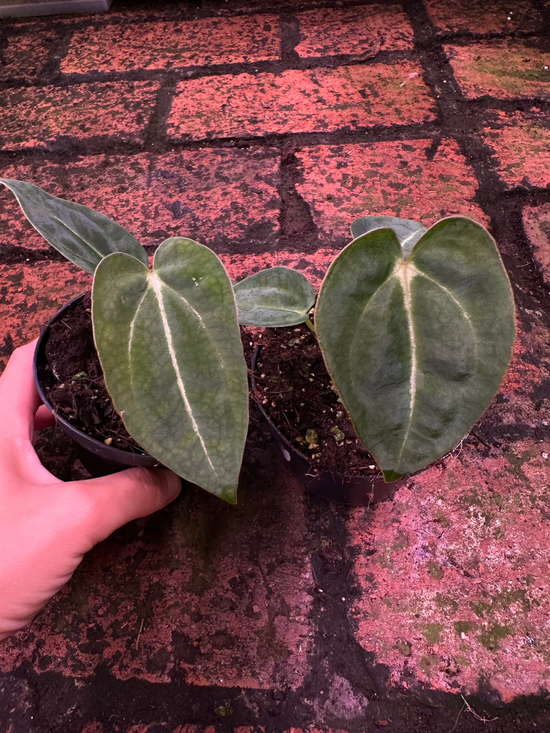 Vendor:Harmony PlantsAnthurium Forgetii x Carlablackiae
Vendor:Harmony PlantsAnthurium Forgetii x Carlablackiae- Regular price
-
€99,00 - Regular price
-
- Sale price
-
€99,00
-
Anthurium Regale x Luxurians S
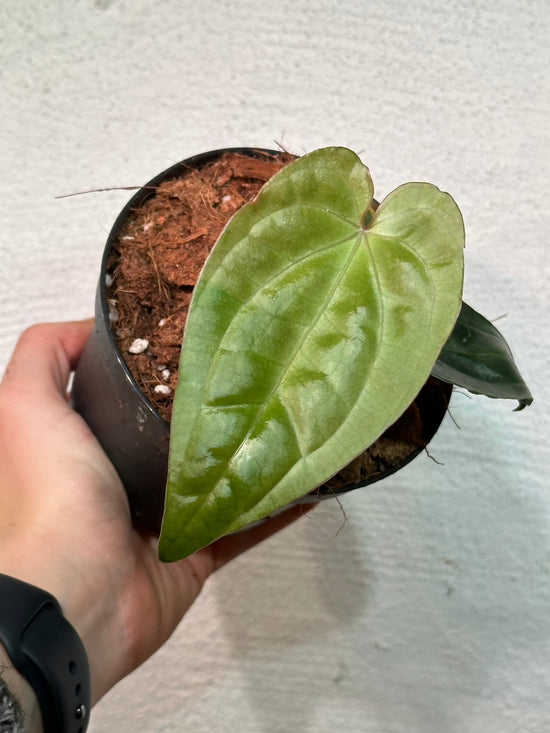 Vendor:Harmony PlantsAnthurium Regale x Luxurians S
Vendor:Harmony PlantsAnthurium Regale x Luxurians S- Regular price
-
€89,00 - Regular price
-
- Sale price
-
€89,00
-
Anthurium Renaissance Variegated
 Vendor:Harmony PlantsAnthurium Renaissance Variegated
Vendor:Harmony PlantsAnthurium Renaissance Variegated- Regular price
-
€29,00 - Regular price
-
- Sale price
-
€29,00
-
Philodendron Atabapoense Variegata
 Vendor:Harmony PlantsPhilodendron Atabapoense Variegata
Vendor:Harmony PlantsPhilodendron Atabapoense Variegata- Regular price
-
€199,00 - Regular price
-
- Sale price
-
€199,00
-
Anthurium Carlablackiae x Hot Chocolate
 Vendor:Harmony PlantsAnthurium Carlablackiae x Hot Chocolate
Vendor:Harmony PlantsAnthurium Carlablackiae x Hot Chocolate- Regular price
-
€29,99 - Regular price
-
€89,99 - Sale price
-
€29,99
-
Anthurium Pallidiflorum M
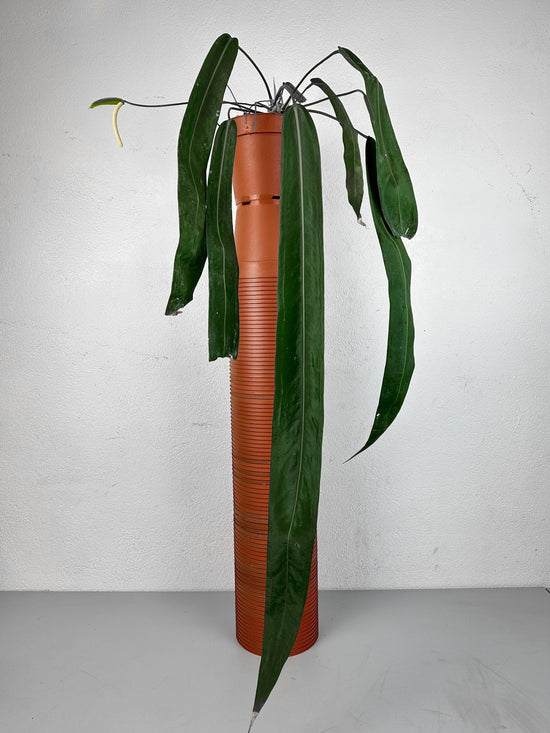 Vendor:Harmony PlantsAnthurium Pallidiflorum M
Vendor:Harmony PlantsAnthurium Pallidiflorum M- Regular price
-
€69,00 - Regular price
-
- Sale price
-
€69,00
-
Anthurium Dressleri x Carlablackiae
 Vendor:Harmony PlantsAnthurium Dressleri x Carlablackiae
Vendor:Harmony PlantsAnthurium Dressleri x Carlablackiae- Regular price
-
€24,99 - Regular price
-
€69,99 - Sale price
-
€24,99
-
Anthurium Regale x Luxurians L
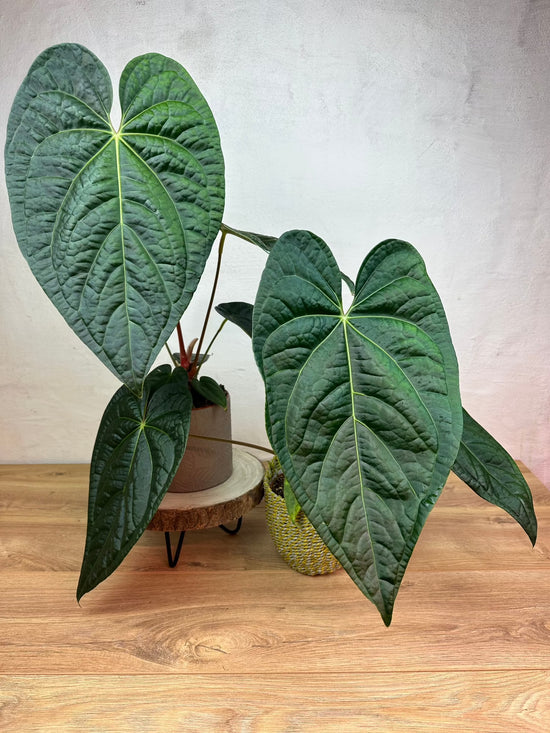 Vendor:Harmony PlantsAnthurium Regale x Luxurians L
Vendor:Harmony PlantsAnthurium Regale x Luxurians L- Regular price
-
€189,00 - Regular price
-
- Sale price
-
€189,00
-
Anthurium Wendlingeri
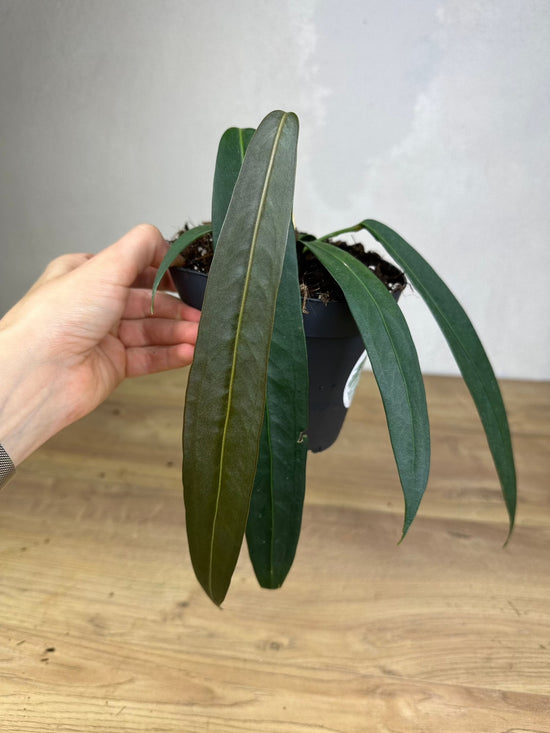 Vendor:Harmony PlantsAnthurium Wendlingeri
Vendor:Harmony PlantsAnthurium Wendlingeri- Regular price
-
€69,00 - Regular price
-
€249,00 - Sale price
-
€69,00
-
Anthurium Red Crystallinum NSE
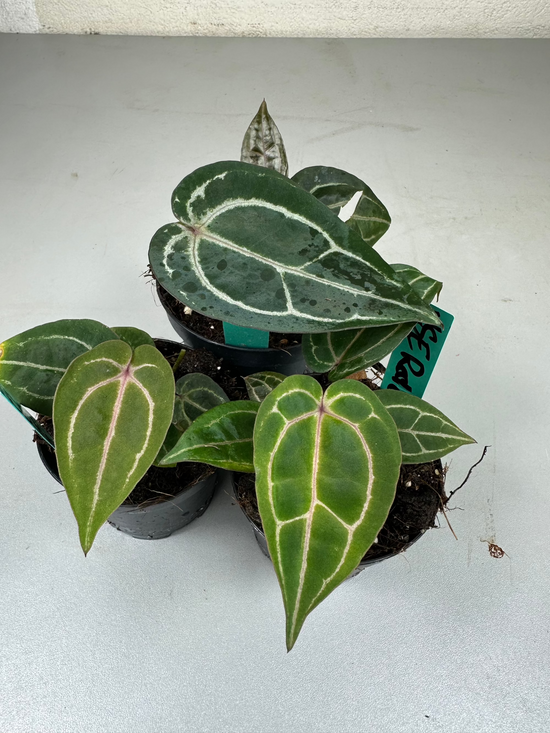 Vendor:Harmony Plants x Tezula PlantsAnthurium Red Crystallinum NSE
Vendor:Harmony Plants x Tezula PlantsAnthurium Red Crystallinum NSE- Regular price
-
€89,00 - Regular price
-
€149,00 - Sale price
-
€89,00
-
Anthurium Pallidiflorum XXL
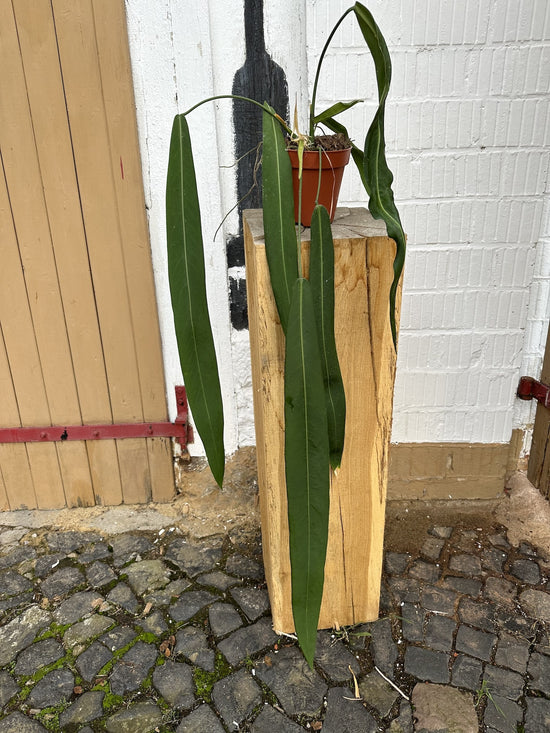 Vendor:Harmony PlantsAnthurium Pallidiflorum XXL
Vendor:Harmony PlantsAnthurium Pallidiflorum XXL- Regular price
-
€89,00 - Regular price
-
- Sale price
-
€89,00
-
Anthurium Queremalense L
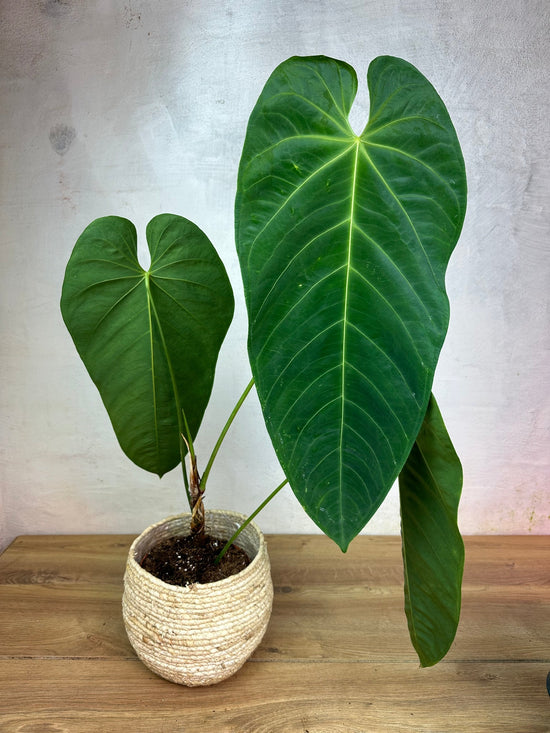 Vendor:Harmony PlantsAnthurium Queremalense L
Vendor:Harmony PlantsAnthurium Queremalense L- Regular price
-
€109,00 - Regular price
-
- Sale price
-
€109,00
-
Anthurium Pandurilaminum x Magnificum
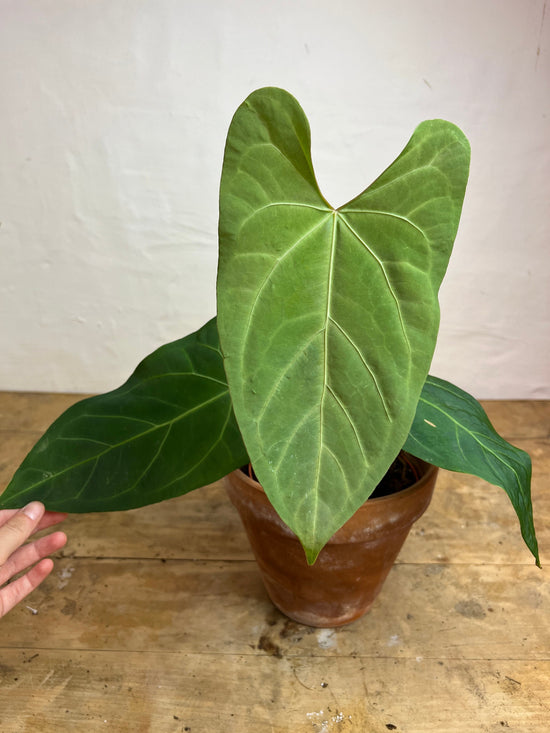 Vendor:Harmony PlantsAnthurium Pandurilaminum x Magnificum
Vendor:Harmony PlantsAnthurium Pandurilaminum x Magnificum- Regular price
-
€79,00 - Regular price
-
- Sale price
-
€79,00
-
Anthurium Warocqueanum XXL
 Vendor:Harmony PlantsAnthurium Warocqueanum XXL
Vendor:Harmony PlantsAnthurium Warocqueanum XXL- Regular price
-
€249,00 - Regular price
-
- Sale price
-
€249,00
-
Anthurium Papilillaminum x Carlablackiae
 Vendor:Harmony PlantsAnthurium Papilillaminum x Carlablackiae
Vendor:Harmony PlantsAnthurium Papilillaminum x Carlablackiae- Regular price
-
€24,99 - Regular price
-
€49,99 - Sale price
-
€24,99
Anthurium variety
Anthuriums, also known as flamingo flowers or house lilies, enchant with their unique, heart-shaped flowers and shiny leaves. These versatile beauties are the ideal addition to any living space, adding tropical flair and fascinating plant lovers of all levels. Thanks to their long-lasting flowers and robust leaves, anthuriums not only add aesthetic but also easy-care accents to any home. Discover the magical world of anthuriums at Harmony Plants - where green passion meets blooming elegance!
Anthurium, also known as flamingo flower or flower friend, is a fascinating houseplant that stands out for its showy flowers and shiny, heart-shaped leaves distinguishes. Originally native to the tropical rainforests of South America, it has become a popular ornamental plant in many parts of the world.
The striking flowers of Anthurium are usually bright red, but there are also varieties in other colors such as pink , white or even green. These showy flowers are actually special bracts that surround the actual flower of the plant. Anthurium blooms almost all year round and adds an exotic touch to any room.
Anthurium care requires moderate light, regular watering and high humidity to create optimal conditions. This plant can be used in pots or as a cut flower in vases and is an ideal choice for indoor landscaping. Anthurium not only brings beauty, but also a touch of tropical flair to your home or office.
Anthurium species and hybrids
There are many Anthurium species, including the popular Anthurium Andreanum (Greater Flamingo Flower) and Anthurium Scherzerianum (Lesser Flamingo Flower). The Anthurium Crystallinum is characterized by glossy leaves with silvery veins, while the Anthurium Clarinervium has heart-shaped leaves with white veins. The Anthurium Veitchii has long, narrow leaves with a waxy appearance. These and many other species offer a wide range of leaf shapes and colors for plant lovers. Our shop also features exciting Anthurium hybrids, such as the Delta Force, a cross between Anthurium Clarinervium and Pedatoradiatum, or a special Anthurium hybrid of Sagittatum and Luxurians.
Anthurium: leaves and flowers
Among plant lovers, the anthurium is also known as the heart-leaf flower—inspired by the shape of its leaves, or bracts. Anthuriums enchant with their striking blooms and glossy leaves. The distinctive calyxes can be colored in various ways—usually bright red, but there are also varieties in other colors such as pink, white, or even green. These striking flowers are actually special bracts that surround the actual flower of the plant. Anthuriums bloom almost year-round and add an exotic touch to any room.
The leaf colors can also vary depending on the species and variety—from rich dark green to delicate green tones to slightly reddish shimmering leaves. Some species also feature strikingly patterned leaf veins that contrast with the background, giving the Anthurium a particularly decorative appearance.
Anthurium care tips
Caring for anthuriums requires moderate light, regular watering, and high humidity to create optimal conditions. This plant can be grown in pots or as a cut flower in vases and is an ideal choice for indoor landscaping. Your anthurium will not only bring beauty but also a touch of tropical flair to your home or office.
- Watering : Anthuriums should be watered about once or twice a week in spring and summer; in fall and winter, an interval of seven to ten days is usually sufficient, depending on temperature and humidity. When watering, the soil should be kept slightly moist, but waterlogging should be avoided. It is important to water the plant only when the top layer of soil is dry.
-
Temperature : The Anthurium prefers bright, indirect light and does not tolerate direct sunlight. Room temperature should be between 18°C and 22°C, and it is important to avoid sudden temperature fluctuations.
- Humidity : Due to its origin in tropical regions, the Anthurium likes high humidity, so regular misting or the use of a humidifier is advisable.
- Pruning : Dead or yellow leaves should be removed regularly to promote the health of your Anthurium.
- Fertilization : During the growing season in spring and summer, fertilize with a water-soluble fertilizer every 4 to 6 weeks. In fall and winter, fertilization can be reduced or stopped.
- Repotting : The anthurium should be repotted into a slightly larger pot every 2 to 3 years when it outgrows its current container. Use well-draining potting soil.
Anthuriums are houseplants that require special care to thrive. By following these care guidelines, your Anthurium can stay healthy and beautiful for a long time. Here you'll find even more care tips to get the most out of your Anthurium.
Common problems with anthuriums
Although anthuriums are considered relatively easy to care for, problems can still arise under unfavorable conditions.
- Root rot : A common problem with anthuriums is root rot, which usually occurs due to overwatering or waterlogging. The roots begin to rot, which manifests itself in yellow, limp leaves and an unpleasant odor from the pot. If your anthurium has root rot, you need to act quickly – find out what you can do here .
- Brown discoloration : Anthuriums originate from tropical regions and are sensitive to dry, heated air. Dry, brown leaf tips or even completely brown leaves often occur when humidity is too low, but can also be caused by drafts or overfertilization.
- Failure to bloom : Some anthuriums fail to bloom or stop blooming if they are kept in too dark a location or do not receive sufficient nutrients. A bright location with indirect light and a regular application of suitable fertilizer for flowering plants will support flower production. Under favorable conditions, anthuriums can produce new blooms almost year-round.
- Pests : Especially in dry indoor air, pests such as spider mites , mealybugs, or thrips can settle on the plant. The first signs are fine webs, sticky leaves, or white, cotton-like residue at the base of the leaves. Regular inspections of your anthurium and prompt treatment at the first signs are crucial to stopping an infestation early.
Buy Anthurium: Large selection in our online shop
Whether a timeless classic or a rare rarity, you'll find a wide variety of Anthurium varieties in our online shop. From popular varieties with vibrant bracts to extraordinary leaf Anthuriums with striking veins, there's something for every taste. If you're looking to buy an Anthurium, you're guaranteed to find the perfect beauty for your plant collection. Order your Anthurium easily online and have it delivered safely and conveniently to your home.
Anthurium FAQ
What types of Anthurium are there?
There are several species of Anthurium, including the common Anthurium Andraeanum and Anthurium Scherzerianum. Anthurium Crystallinum features shiny leaves with silvery veins, while Anthurium Clarinervium has heart-shaped leaves with white veins. Anthurium Veitchii has long, narrow leaves with a waxy appearance. These species offer a wide range of leaf shapes and colors for plant lovers. Care requirements may vary depending on the species.
How do I properly care for my Anthurium?
The anthurium, also known as the flamingo flower or flower friend, is a houseplant that requires special care to thrive. It prefers bright, indirect light and does not tolerate direct sunlight. The room temperature should be between 18°C and 22°C and it is important to avoid sudden temperature changes. Due to its origins in tropical regions, the anthurium likes high humidity, so regular misting or the use of a humidifier is advisable.
Dead or yellow leaves should be removed regularly to promote the health of the plant. Also note that anthuriums are poisonous, both to humans and pets, so they should be kept out of the reach of children and pets. By following these care guidelines, your anthurium can stay healthy and beautiful for a long time.
How often do I need to water my Anthurium?
When watering, the soil should be kept slightly moist, but waterlogging should be avoided. It is important not to water the plant until the top layer of soil is dry.
What do I have to consider when repotting and fertilizing?
During the growing season in spring and summer, fertilize with a water-soluble fertilizer every 4-6 weeks. Fertilization can be reduced or suspended during fall and winter.
The anthurium should be repotted into a slightly larger pot every 2-3 years if it becomes too large for its current container. Use a well-drained potting mix.






















